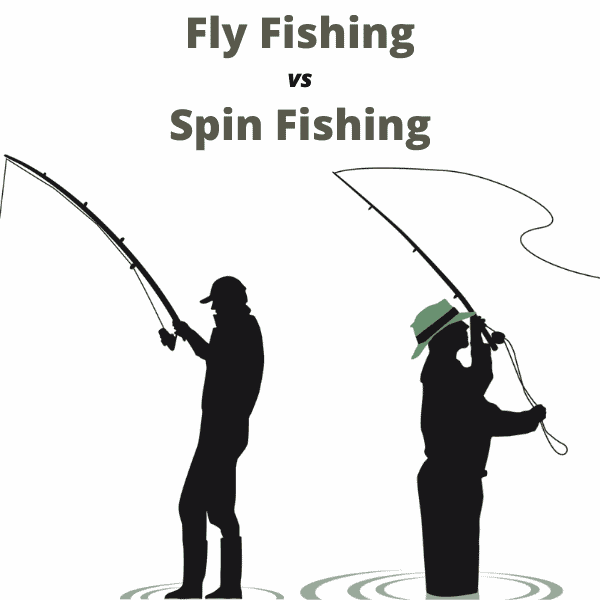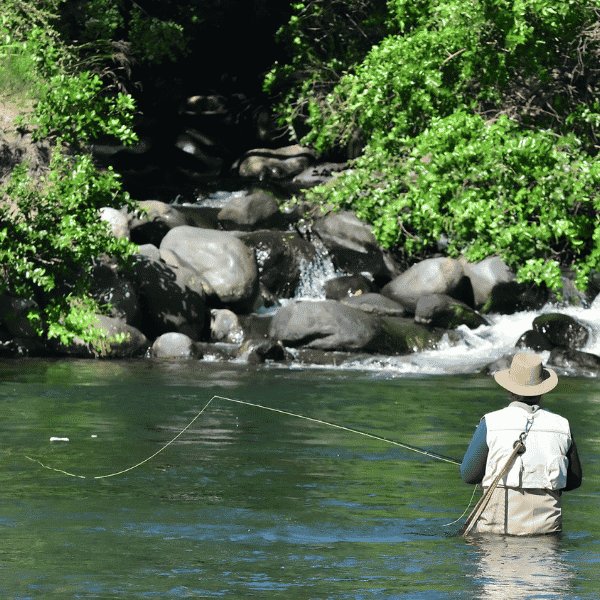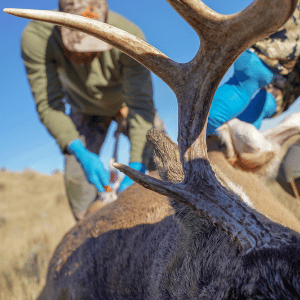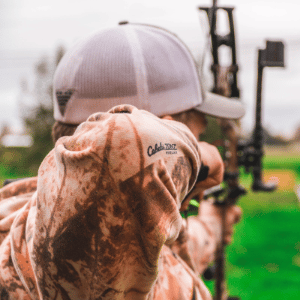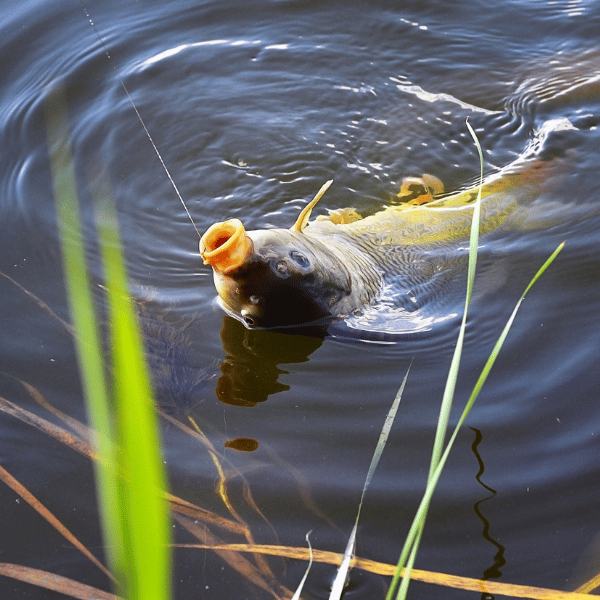How to Cast a Fly Rod for Beginners
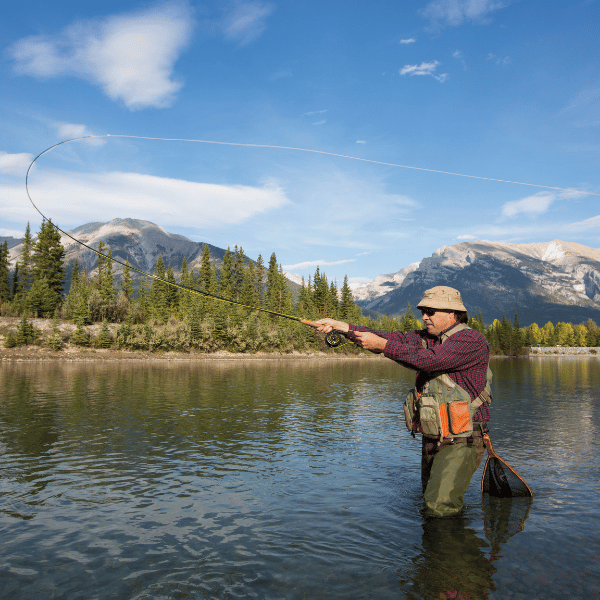
Learning how to cast a fly when fly fishing takes knowing the best fly casting technique and practice. Your cast will improve over time as you understand the techniques and with experience.
Finding your perfect casting rhythm will depend on your willingness to practice and learn. There are many ways to cast a fly and improve your casting technique to cast long distances.
We are going to go through the best beginner fly fishing casting techniques to improve your cast and how to practice them to jumpstart this process.
After reading this guide, you will be able to focus on practicing your cast and catching fish since you will know all the basics of how to cast a fly rod and how to practice in or out of the water.
Contents
Fly Casting Basics
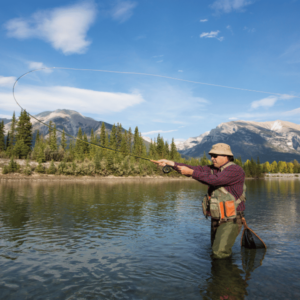
The main difference between casting a fly rod and a spinning rod is which technical element you are focusing your force upon. When casting a spinning rod, you cast the lure for the line to follow. When you are casting a fly rod, you cast the line for the lure to follow.
In traditional fly-casting, a fisherman will have to learn how to bend the rod with the right amount of force that will help the nymph float and look appealing to unsuspecting game fish.
First, you must gather about 25-30 feet of line at your feet to throw out for your nymph to float properly. Next, keep your bicep close to your chest and crank your rod backward like a lever. You want your wrist to assist the cast with a grip that is both firm and loose.
If your wrist is too stiff, you may not build enough momentum for the line to stream down into your casting area. If your wrist is too loose or the range of motion is too wide, your cast may be sporadic and it will be prone to snagging onto bushes, trees, or debris. Use a grip that employs either your thumb or forefinger on top of the grip. A thumb grip will give your cast more power, while the forefinger grip will give you more accuracy.
Beginner Fly Cast Technique
To truly master casting your fly line, you will need a little background on how the basic principles and physics of casting works. There may be many obstacles that prevent a successful cast, such as powerful wind, high bushes, and overhanging branches. Learning about the basic principles of fly casting will be essential in mastering your cast.
Make sure the end of the fly line has completely stopped moving before starting another cast. This will help concentrate the force in the appropriate timing for a successful cast. Once the line is moving, you can load the rod by moving the casting hand at a gentle incline until stopping it quickly at the end of your motion.
The line will then go in the direction of the rod tip, and the rod straightens toward when the rod hand stops. The longer the distance the rod travels on the back-and-forth casting strokes, the less effort that you will have to dish out for the cast.
There are many elements to focus on when fly-fishing, so make sure to prepare for your trip by practicing the necessary skills and techniques for proper casting to ensure optimal performance when it matters. If you are casting extreme distances, read on to learn some tips to make your casts stronger and more long-range effective.
Beginner Fly Cast Technique
The first thing you want to make a note of is that you should master your form. Fly fishing might seem easy enough—and it is, provided that you are familiar with the basic mechanics of it all.
For starters, some of the biggest mistakes you can make while casting is flexing your wrist too much during your stroke. This causes you to form wide loops with your line which can lead to tangles. Not only that, but it can have a physically damaging effect on your hand and forearm.
When casting, be sure that you are incorporating a motion known as the “flying elbow” which is exactly what it sounds like. This movement prevents the line from running into itself and or even the rod when casting.
A good thing to keep in mind is that the line follows the rod tip. Not to mention that when casting, you should start at the shoulder as opposed to your elbow or even your wrist.
Another thing to note is that you should try and keep control of the line as much as you can. You have to make adjustments every time you cast, which can include lengthening or even shortening the line.
This can be difficult because it essentially means you are focusing on more than one thing at a time. However, it simply takes a bit of concentration and a lot of practice to be able to gain the muscle memory required to be able to do this.
Techniques to Improve Fly Casting
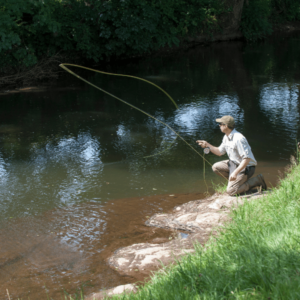
Regardless of whether you’re a beginner or a seasoned pro, there is always room for improvement when it comes to fly casting. As a matter of fact, you should always be looking for ways to improve.
For starters, it is important to know that there is a big difference between fly rods and regular fishing poles. With a fishing pole, you are leveraging the weight of the lure or bait to cast. With fly rods however, you are leveraging the weight of the fly line to cast.
This is because your fly typically weighs little to nothing at all. As a result, you are relying entirely on your weighted line to place your fly. If you don’t understand the difference here, it’s safe to say your technique will never get better.
When you’re fishing, one of the most important rules to follow is to be patient. If you see a fish, try not to cast your line right away. Remember, patience is a virtue. Not only will you likely scare away the fish, but you will also decrease the efficiency of your cast. In turn, it will be entirely inefficient and you will have simply wasted your time.
Granted, this is much easier said than done. Fly fishing can be frustrating, especially when you’ve been at it for a while. However, it’s important to focus on your technique as much as you can and force yourself to stay in the moment.
When fly fishing, you are focused on one thing and one thing only— catching a fish. However, you have to be able to consider all other aspects of fly fishing. For one, be sure to look back when casting your line.
Having good form means that you are making sure the line is unraveling completely before starting your forward cast. If you aren’t seeing your mistakes, you won’t be able to learn from them. Keep in mind however that when looking back, you only move your head and not your entire body as this could distort your cast.
Tips for Far Distance Fly Casting
If you are trying to make the most distance out of your fly cast, the first thing you want to incorporate is high trajectory. When short or medium casting, you can let your trajectory fall horizontal or even at a slightly downward slope. Use an upward sloping trajectory for long-distance casting.
Make sure to increase the casting stroke long enough to carry out the right amount of line and create the proper drift for your cast. Use a rocking motion by shifting your weight to your back leg during the backcast and lean towards your working leg as you forward cast. This rocking motion will help lengthen your cast with a great amount of accuracy.
Your handline should accelerate and come to a sudden halt just like your rod hand to perfect the motion of casting. Start your haul slowly and smoothly and increase in speed throughout the haul. End the motion with a sharp flick of the wrist.
Mastering the right amount of force will depend on your grip technique aligned with the appropriate casting motion. Give your rod hand a sharp squeeze at the stopping point to create a crisp halt that will give you the perfect transfer of energy to send your line long distances.
Can You Practice Fly Casting Without a Fly?
If you want to practice your cast at home so that you will be prepared to make the most out of your next fly-fishing expedition, check out a few exercises you can try at home to master your fly line cast.
Invest in a simple and inexpensive laser pointer and master your trajectory by flicking the laser pointer with your wrist as you do a rod. If you follow the trajectory of the line that you make on the ceiling with the visible dot of the laser pointer, you will be able to accurately assess your natural casting tendencies.
You want to cast a straight line and adjust your trajectory for the distance in which you are aiming for in your imagination. If your casting motion has a lot of jagged and unexpected shaking, you will want to work on improving your technique by drawing smooth lines with the laser pointer.
Once you master a smooth line and accurate trajectory placement, work on flicking the end of the laser pointer as you would your rod when casting in order to get the real-life feel and experience of fly-fishing. There are more ways to practice at home, you can even practice on your lawn.
Can You Practice Fly Casting Without a Fly?
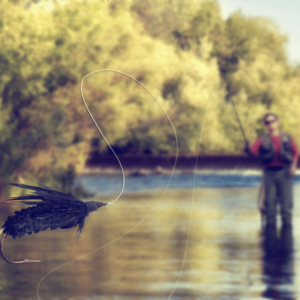
The short answer is yes you can.
When you are working on the fundamentals of fly fishing, casting without a fly is a great option. This is because it is able to eliminate as many variables as possible, which allows you to focus on fundamentals alone.
When practicing without a fly, however, it’s important that you keep in mind a few things. For one, the weight and wind resistance of a fly has the ability to make a difference when casting. This is especially true when you are comparing it to a virtually weightless piece of yarn.
What to Use to Practice Fly Casting?
If you’re still not quite ready to go out and start fly fishing right away, don’t worry. Practice makes perfect after all. In order to practice fly fishing, consider using a fly casting practice rod. These are essentially just small versions of regular rods that you can use indoors and practice your technique with.
Obviously, you won’t be able to use these rods to fish in real life, but you can certainly use them when you want to practice and can’t do so with an actual fly cast. A mini fly cast allows you to work on things like your timing, loop control, and backhanded presentations.
These are all important techniques to learn and can be done without having to leave your home.
Another benefit of using a fly casting practice rod is that you are able to notice mistakes much easier and can correct them just as quickly. The best way to practice is by using small targets from different distances as well as using obstacles and even various angles.
A fly casting practice rod is also a fun way to bond with other fellow fly fishermen without having to be overly competitive about it.
How to Practice Fly Casting on Grass
If you are not afraid to show your progress to your neighbors, you may want to consider mastering your cast outside on your lawn before taking it out into the wild.
Roll casting on your lawn can be difficult and unhelpful in building your technique if your leader is not properly anchored. When fly casting in water, the friction of the water will anchor your leader and employ the proper casting function. When you cast on grass for practice, you will want to anchor your leader to imitate the necessary water friction.
You can easily anchor your leader into a spare small piece of wood, such as a section of a 2”x4” to ensure the proper amount of anchorage. Find your perfect grip and employ your technique on the grass with an anchored driver to imitate real-life results and assess your casting action for improvement.
Make sure the anchor is on the outside of your casting region so your anchor does not cross your line to avoid unnecessary tangles or unexpected dangerous casting motions. If you are right-handed, stick your anchor a few feet to the right of your shoulder. If you are casting left-handed, make sure your anchor is placed a couple of feet to your left and cast between that range to improve your accuracy.
Common Fly Casting Mistakes
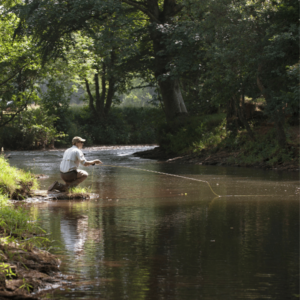
As a beginner, you’re bound to make some mistakes every once in a while. This doesn’t mean you can’t learn from them. In fact, even some of the best fly fishermen still make mistakes.
The most common mistake is known as the “tailing loop.” When casting a line, your fly cast should unroll in a loop. The loop should be open and resemble a “C.” However, if the top and bottom legs of the line cross, you’re in trouble.
This is what is known as the tailing loop and can cause your line to tangle up, thus causing a wind knot. Not only does this slow down your process, but untangling a knot like this can be incredibly tedious.
In fly fishing, a double haul is incredibly important and a great way to keep your control on particularly windy days. You should always double haul from the base of the rod, but most people tend to do it from their hip, which in turn leads them to drag feet of slack across their chests while they wait for the backcast to finish unrolling.
In order to do a correct double haul, let the backcast draw your line hand along with it as it goes backward. This will then pull your hand into a position where it should be by the butt of the rod.
How to Reel in a Fly Rod
When mastering the usage of your fly reel, you will need to make sure your drag is not too tight. Keep your rod tip high and put pressure on the trout by slowly reeling in your line. Fish that reside near the bottom of the riverbeds will need to be enticed by your lure, and you will need to reel in as much line as you can and dip the rod and reel when you lift it again.
Make sure to not reel in too much line too quickly, because you will put unnecessary tension on your leader and break your grip on the fish. If you reel in your line too slow you will not have enough pressure to create the appropriate amount of slack that needs to be distributed across the line.
Stop a fish dead in its track with the real without breaking your tippet by utilizing the drag on your fly reel. We recommend setting your drag tension just a few clicks below medium for most performance needs. Be careful, though, because too much drag will break the fish off of your line, and too little will help the fish escape the grips of your hook.
Practice Creates Perfect Casts
Now that you know all the tips and tricks to improve your casting experience, it is time to either hit the lawn or the streams for practice. Finding the right flow when fly-fishing will depend on a lot of things such as the current of the stream, the terrain of the riverbed, and the direction of the wind.
No matter what circumstance you may find yourself in if you take these tips and tricks to heart the next time you take your fly-fishing rod out to catch big fish game. You will be sure to master your casting flow and dominate the riverbed in no time.
